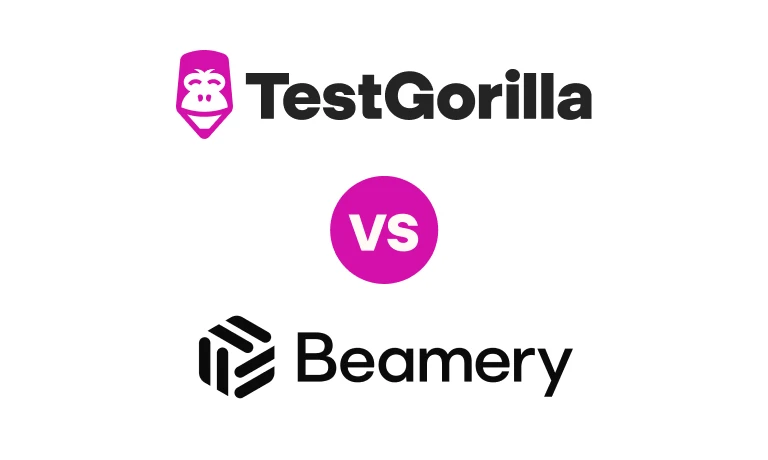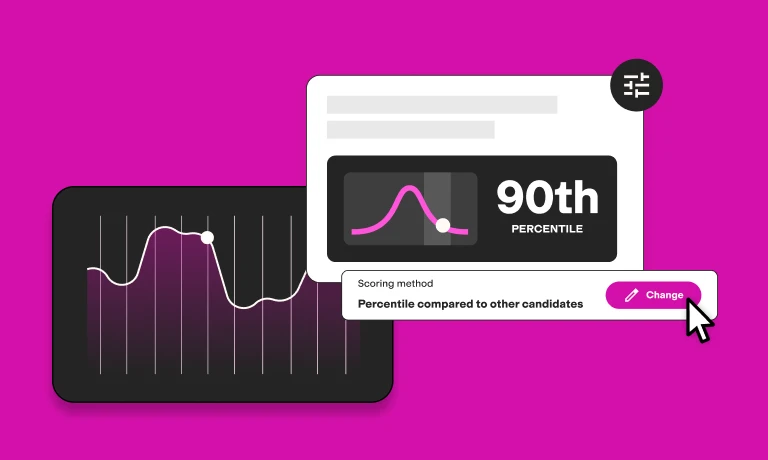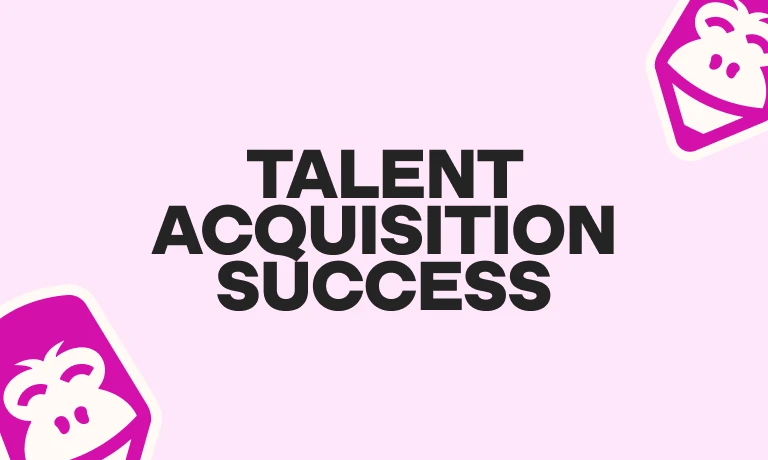Employee recognition statistics: Everything you need to know
Recognizing employees isn’t just about making them feel good – it also directly impacts motivation, retention, and overall productivity.
Employees who feel valued for their efforts are more likely to go the extra mile and stay committed to your organization. A lack of meaningful recognition, on the other hand, can lead to disengagement, high turnover, and a weaker workplace culture.
Below, we’ve gathered the latest employee recognition statistics to help you understand what works, what doesn’t, and how to make recognition a key part of your company’s success.
How we researched this topic
To compile the latest data on employee recognition, we consulted various trusted organizations and reputable sources, including Gallup, Workhuman, Trendicators, and the Blackhawk Network.
We also consulted independent research from Reward Gateway, O.C. Tanner, Achievers Workforce Institute, and more.
These sources surveyed large samples of employers, employees, and more firsthand to gather the statistics referenced in this article.
Key takeaways
Nearly 84% of employees say recognition drives their motivation, and those who feel genuinely appreciated are 45% less likely to leave their jobs.
When recognition is given fairly and feels authentic, employees are more than twice as likely to go the extra mile.
Eighty percent of employees say frequent, smaller rewards make them feel valued, with nearly two-thirds emphasizing the importance of receiving recognition promptly.
Thirty-nine percent of employees value recognition from their immediate supervisor most, yet less than half even know if their company has a recognition program.
The best insights on HR and recruitment, delivered to your inbox.
Biweekly updates. No spam. Unsubscribe any time.
7 important employee recognition statistics
Let’s dive into key employee recognition stats and explore what they reveal about motivating teams, boosting retention, and driving engagement.
1. More than 80% of workers say employee recognition impacts motivation
In a recent Nectar survey of 1,800 full-time employees, nearly 84% of employees feel that employee recognition impacts their motivation to perform well at work.
That said, not everyone is equally influenced by recognition. Older employees often feel less motivated by it. However, it really strikes a chord with employees aged 35-44. Those with postgraduate degrees and those earning between $75,000 and $99,999 seem to get the biggest motivation boost from being recognized at work.
2. Employees are 45% less likely to quit when valued
Research from Gallup and Workhuman, tracking over 3,400 employees from 2022 to 2024, reveals a significant link between genuine appreciation and employee retention. Employees who felt sincerely valued were 45% less likely to leave their jobs within two years.
This finding shows the importance of strategic recognition – recognition that is real, tailored to each individual, given fairly, and integrated into daily work life – on a company's stability and future success.
Without this kind of strategic recognition, companies risk high turnover costs, which can be substantial. Gallup also found that replacing managers can cost up to double their salary, technical staff up to 80% of theirs, and frontline workers about 40% of theirs.
More than that, without genuine recognition, you risk losing the kind of strong, buzzing workplace culture that makes people actually want to come to work.
3. 39% of job seekers value recognition from supervisors most
Employees understand recognition is crucial, but they also care about who’s giving it. In the Trendicators 2024 Recognition Survey Report, which surveyed 1,500 job seekers, 39% mentioned that getting recognition from their immediate supervisor matters the most to them.
Close behind, 30% value recognition from senior leadership the most, while 23% appreciate recognition from their peers.
When it comes to what employees want to be recognized for, opinions vary. About 34% value recognition for their performance the most, while a smaller group, around 11%, appreciate being acknowledged on personal occasions like their birthdays.
4. 80% of employees feel valued by frequent, small rewards
Blackhawk Network’s 2024 research uncovers some important points about reward and recognition programs: 80% of employees say these programs make them feel valued, and 75% say they boost their loyalty to their employers.
However, what employees want from these programs is evolving. Most now prefer to receive smaller rewards more often than big ones that come only yearly. This preference has become more pronounced in 2024 compared to 2022.
Additionally, nearly two-thirds of employees now stress that it’s extremely important to get rewards and recognition promptly. This means incorporating recognition into the digital platforms they use every day, like Microsoft Teams and Zoom.
Jeff Haughton – Blackhawk Network’s Senior Vice President of Incentives, Corporate Development, and Strategy – puts a fine point on this:
“A gift that arrives in the mail weeks after an employee hits a work milestone will have less impact than a reward given immediately on the spot – likely even within the video conferencing tools that enable a vast amount of today’s workplace meetings.”
5. Less than half of employees believe their employer has a recognition program
According to Reward Gateway’s HR Priority Report 2024, Only about half (49%) of workers think their company has a reward and recognition program, even though nearly two-thirds of HR leaders say there is one.
This indicates that while many organizations may have programs to recognize and reward their employees, they struggle to communicate this. But communication isn’t the only issue. Of the employees aware of these initiatives, only 47% say the level of recognition is good.
6. Half of non-desk workers feel expendable, only 30% feel valued
O.C. Tanner’s 2024 Culture Report focuses on a surprisingly overlooked majority: the 80% of the global workforce who don’t work at a desk. These are the people building our cities, preparing our food, serving in establishments, delivering products, and caring for our health.
This group often feels overlooked by their organizations. Half of them feel treated as expendable, and only 30% feel seen and valued. They also doubt that leaders really understand their work or how they contribute to the company's success.
In addition, less than half report receiving any recognition from leaders or peers in the past month – and when they do, they say it feels insincere. Only 26% find the recognition they receive meaningful, and less than half believe their leaders know how they prefer to be recognized.
Plus, when these workers are struggling financially, certain gestures from the company, like random free lunches, can feel more insulting than rewarding – especially when they see office peers getting cash bonuses for work that they helped achieve.
To make matters worse, many feel underestimated by their office colleagues. Nearly 40% feel seen as inferior, about 35% say their ideas are often overlooked or dismissed by senior leaders, and 39% believe their work isn’t valued as much as the work done in the office.
7. Less than 40% of HR leaders see results from recognition programs
The 2024 State of Employee Recognition report from Achievers Workforce Institute reveals that two-thirds of HR leaders aren’t seeing business results from their recognition programs.
What’s more, only 40% of HR leaders feel their recognition programs are effective, yet 63% planned to increase their spending in 2024. This means one-third of the companies that ramped up their budgets didn’t see the return on investment to support those decisions.
That means organizations must work hard to design recognition programs that actually make an impact. Without meaningful, well-structured recognition, companies risk wasting resources and missing out on the benefits of higher employee engagement, retention, and performance.
Luckily, we have some proven tips to help you build recognition programs that resonate with your employees.
4 strategies for improving employee recognition
1. Give fair recognition and genuine thanks
Boosting employee motivation can be as simple as ensuring everyone feels they have a fair shot at recognition. A study in 2023 found that employees are more than twice as likely to put in extra effort if they believe recognition is given fairly.
For employers, this means setting clear, straightforward criteria for what earns recognition and sharing these guidelines with everyone. This way, all team members know what they need to do to get noticed and feel motivated to go the extra mile.
Also, never underestimate the power of a heartfelt thank you from the boss. The same study showed a massive jump – 69% more employees are likely to give their best effort when they feel genuinely appreciated by their managers.
So, training managers to give regular, sincere thanks can pay off. Whether a quick thank you in passing or a mention during a team meeting, these small gestures can make a big difference in how hard your team works.
2. Recognize employees with fair pay
Employees appreciate a pat on the back during a team meeting, but without fair pay to back it up, those gestures can sometimes feel hollow.
The reality is that projected salary budgets are set to grow by only 3.7% in 2025, according to WTW’s Salary Budget Planning Report. This is less than 2024’s growth rate and barely keeps pace with inflation and rising costs of living. For many employees, that’s not enough to feel recognized or valued.
Employers must look beyond standard percentage increases and find creative ways to ensure pay reflects both the market and employees’ contributions. Addressing gaps, like long-time employees earning less than new hires, is a meaningful place to start.
Fair pay isn’t just about the numbers, though – it’s also about trust. Pair equitable salaries with transparency around how raises and bonuses are decided. Add in financial recognition, like performance bonuses or loyalty incentives, to show your team that their hard work matters.
3. Celebrate employee growth
Offering employees learning and development opportunities shouldn’t be treated as a form of recognition – it’s a fundamental responsibility for any employer or manager. After all, 94% of employees say they’d stay longer at a company that invests in their learning and development.
But what can deepen the impact of your L&D is recognizing employees who take full advantage of those opportunities. Celebrate milestones like completing certifications, mastering new skills, or stepping up to tackle challenging projects. Whether it’s a personalized note or a feature in a company newsletter, acts of recognition can go a long way.
Highlighting growth stories in internal channels or offering tangible rewards, such as badges or small prizes, for key achievements can further encourage participation and boost productivity. For example, one of Workhuman's customers found that employees who received five or more awards were almost twice as likely to improve their performance.
When recognition is tied to growth, it inspires employees to keep learning and reminds them that their development matters to the organization.
4. Bring recognition to life with in-person events
Cash rewards and shoutouts are nice, but meeting face-to-face creates a lasting connection. It reminds employees that they’re more than just workers – they’re valued team members.
Celebrate milestones like promotions, anniversaries, or big wins with a team lunch, happy hour, or fun outing. To recognize standout contributions, plan an annual appreciation event, like a holiday party or awards night. Even team-building activities, like escape rooms or outdoor adventures, can double as a meaningful way to show appreciation.
If your team is remote and in-person isn’t an option, don’t skip the celebration. Host a virtual event, send out thoughtful care packages, or find creative ways to bring everyone together when you can.
Level up your hiring process with talent assessments
Employee recognition starts with hiring the right people. When you bring in candidates whose skills, personalities, and values align with your organization, it becomes easier to recognize and reward their contributions meaningfully.
Talent assessments – like the ones TestGorilla offers – are perfect for this. They enable you to evaluate candidates’ personality traits, job-specific skills, cognitive abilities, and more.
Personality tests give insight into how people might work within your culture and how they prefer to be recognized. Meanwhile, cognitive ability tests help you understand candidates’ problem-solving skills, which are often tied to the standout efforts that deserve recognition down the line.
Together, TestGorilla’s 350+ tests science-backed tests can help you create a stronger foundation for recognition by matching talent with the needs and goals of your organization.
Ready to upgrade your hiring process? Sign up for your free TestGorilla account today.
FAQs
How can managers encourage peer-to-peer recognition?
To encourage peer-to-peer recognition, managers can set up systems – such as a dedicated Slack channel, virtual kudos boards, or structured programs – where employees can nominate each other for recognition.
What role does leadership play in employee recognition?
Leadership sets the tone for recognition. When leaders consistently acknowledge employee contributions, they reinforce the importance of doing this and encourage others to do the same.
Can recognition improve team dynamics?
Yes. Recognizing individual and team efforts builds trust, boosts morale, and strengthens collaboration by making everyone feel valued and appreciated.
You've scrolled this far
Why not try TestGorilla for free, and see what happens when you put skills first.





















